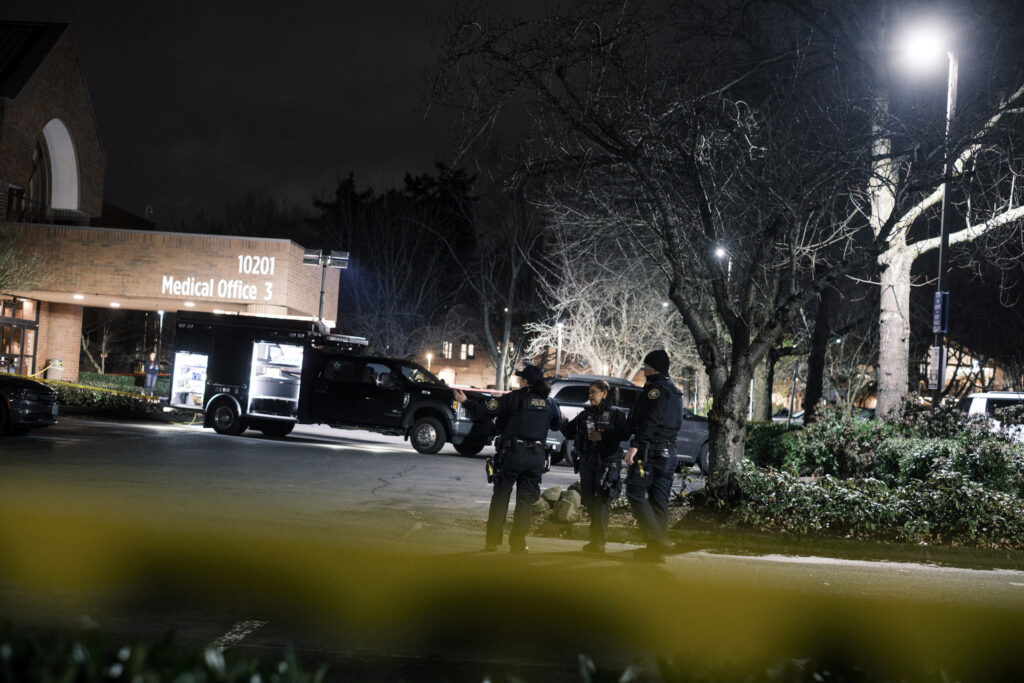Unconfirmed shootings make up the majority of alerts from NYPD's gunfire detection system, according to a city audit. (Shutterstock)

- The NYPD's gunfire detection system often sends officers to respond to unconfirmed shootings.
- The city comptroller recommends not renewing the contract with the system's developer unless a thorough evaluation is conducted.
- Unconfirmed shootings ranged from 80% to 92% of alerts during an eight-month audit of the system.
Share
|
Getting your Trinity Audio player ready...
|
NEW YORK — A gunfire location and detection system long used by the New York Police Department and other law enforcement agencies nationwide, — including in Fresno — is sending police officers to respond to loud noises that don’t turn out to be confirmed shootings 87% of the time, a city audit released Thursday has found.
The low rate of confirmed shootings through ShotSpotter means police officers spent thousands of working hours responding to unfounded reports of gunfire, said New York City Comptroller Brad Lander, whose office conducted the audit.
“The evidence shows that NYPD is wasting precious time and money on this technology and needs to do a better job managing its resources,” he said in a statement. “Chasing down car backfires and construction noise does not make us safer.”
Among other recommendations, the Democrat called for the city not to renew its contract with SoundThinking, the California-based company that developed ShotSpotter, unless a more thorough performance evaluation is conducted.
The NYPD paid the company more than $45 million between 2014 and 2023, according to the comptroller’s office. A three-year renewal reached in 2021 would bring the total contract amount to nearly $55 million when it expires in December. The system utilizes more than 2,000 acoustic sensors to detect gunshot activity citywide.
Related Story: Balderrama Applies for Texas Police Chief Job
Response from NYPD and SoundThinking
A spokesperson for the NYPD referred to the department’s response, included at the end of the audit.
The seven-page reply says, among other things, that the comptroller analysis fails to acknowledge that officers responding to ShotSpotter alerts serve as a form of crime deterrent simply by investigating the scene.
It also says its difficult for the department to determine exactly how many ShotSpotter reports result in a “confirmed shooting” as those are only ones in which shell casings, firearms, property damage, videos, witnesses, victims or other forms of evidence are also identified.
SoundThinking, in an emailed statement, said its reviewing the report but believes it is “gravely misinformed in its assessment of data and the value of ShotSpotter as a critical public safety tool.”
The company argued that the comptroller’s office looked at the wrong metrics and that system is not just accurate and effective but also saves lives in communities hit hardest by gun violence.
“It should focus on full awareness of gunfire as it occurs, rapid response, and most importantly, lives saved,” the company said of the audit.
Related Story: Balderrama: ‘I Plan on Leading This Police Department to Even Greater ...
Major Cities Drop ShotSpotter
According to Lander’s audit, unconfirmed shootings ranged from 80% to 92% of alerts during the eight months that his office audited the system between 2022 and 2023. That resulted in police officers investigating more than 7,000 incidents that did not turn out to be confirmed shootings, the audit found.
More than 160 cities nationwide use ShotSpotter, according to the company’s website.
But earlier this year Chicago joined a growing list of major cities, including Atlanta, New Orleans and Charlotte, North Carolina, that decided to stop using the technology.
Some critics said they found it expensive, ineffective and even racially biased.
Community groups in Chicago complained in legal filings in 2021 that false gunshot reports sent police into predominantly Black and Latino neighborhoods for “unnecessary and hostile” encounters.
RELATED TOPICS:
Categories

Google Guys Say Bye to California


















